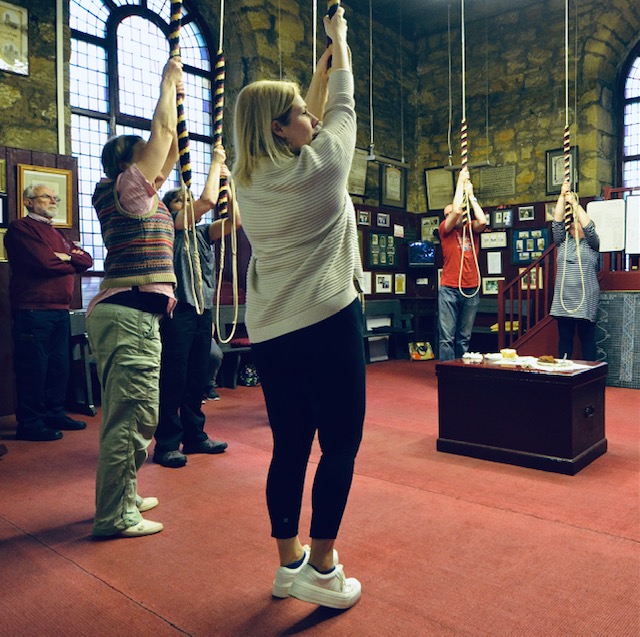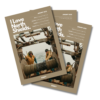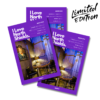By Diane Wailes
There are certain sounds that define a place. For North Shields, it’s the sound of the foghorn on the river, and the cry of the gulls. But there’s something else that’s been an important part of our town’s soundscape for almost 240 years, and that’s the ringing of the ten bells in Christ Church tower.
It was back in the late 1700s that the idea of a bell tower was first mooted by the congregation of Christ Church. They’d sold off some old pews to raise cash to extend the church, and had £600 left over. Some members of the congregation argued that the money should be used to educate local children. But North Shields was expanding rapidly, up the bank and away from the river, and many of the churchgoers wanted a building that reflected the prosperity of their smart ‘new’ town. So the decision was taken to add a tower to the church. The building work began in 1786 and an order for six bells was placed with the famous Whitechapel Bell Foundry in London.
Disaster struck when the first set of bells was lost at sea on the journey from the Thames to the Tyne. Perhaps the naysayers were secretly pleased. A second set was commissioned and they arrived safely on a ship aptly named ‘The Happy Return’, in time to be rung for the first time on 18th January 1788, to mark the birthday of Charlotte, Queen Consort of George III.
And those original bells – with four later additions – have been ringing ever since, hanging at the top of the massive square tower, from their original wooden beams, made of solid ship’s oak. With the largest bell weighing as much as a small car, the beams need to be strong!
Bell ringing practice happens every Tuesday evening and ‘ringing master’, Karen Dickinson, invited me along to find out more. I was met at the church door by veteran bell ringer of 60 years, Mike Scott – approaching his 80th birthday and proof that bell ringing is great exercise!
Mike was taught how to ring the bells by his father, who was taught by his father – continuing back through his family tree for five generations to his great great grandfather.
Then it was up the steep, spiral staircase into the surprisingly spacious ringing room, to meet the rest of the bell ringers – a very friendly, enthusiastic and sociable crowd who kept their strength up during the strenuous session with delicious home-made cakes!
A number had first tried out bell ringing as children, then given it up as teenagers because it wasn’t ‘cool’, only to be tempted back later. Cathy joined after enjoying a taster session organised by the U3A. And Liz, who had recently moved up to North Shields from London, joined the group to meet new people. The regulars were also joined on this occasion by two bell ringers who’d come all the way from Malvern to see Bruce Springsteen at the Stadium of Light the following day, and who couldn’t resist fitting a bit of bell ringing into their trip to the North East!
Karen, in her ringing master role, kept things running smoothly, calling out instructions for the different ringing patterns: quite literally ‘ringing the changes’! I was told that up until the late 1950s bell ringing was done almost exclusively by men, because of the strength needed to ring the heavy bells. But the introduction of new bearings into the ringing mechanism opened the activity up to women.
Now a mixed group of men and women of all ages – some with years of experience and some newcomers – ring out the bells every Sunday, for weddings, and on important national and royal events. Perhaps most movingly, every New Year’s Eve, the bells are muffled and rung in the run up to midnight to mark the ‘death’ of the old year, then rung again without muffles to welcome in the new year!
If all of this sounds interesting and you’d like to get involved you can email Karen – [email protected] – and arrange to go along to one of the Tuesday evening practice sessions yourself, to find out more.

































